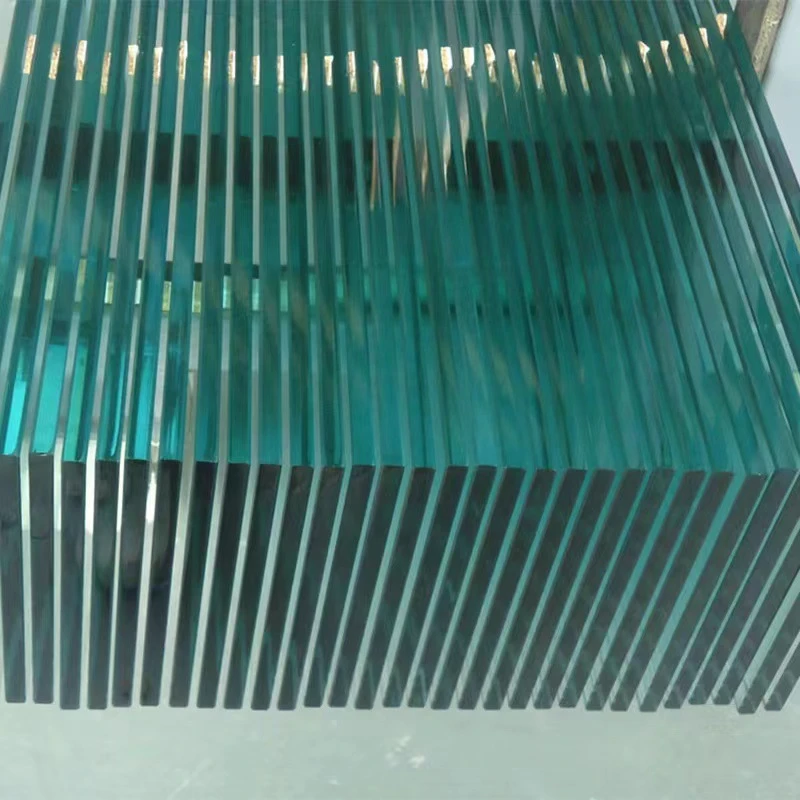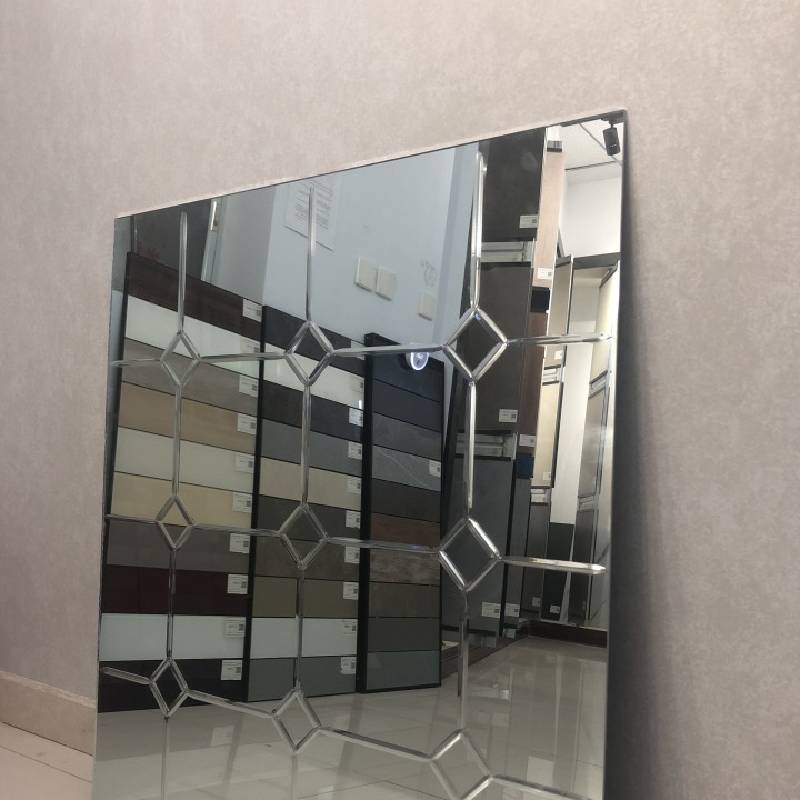- The Manufacturing Revolution Behind Toughened Fluted Glass
- Technical Superiority: Data-Backed Performance Metrics
- Market Comparison: Leading Toughened Fluted Glass Producers
- Tailored Solutions: Customization Parameters and Options
- Application Showcase: Architectural Implementation Case Studies
- Installation Excellence: Professional Handling Protocols
- Sustainability and Future Applications of Toughened Fluted Glass

(toughened fluted glass)
The Manufacturing Revolution Behind Toughened Fluted Glass
Toughened fluted glass represents a pinnacle achievement in modern architectural material science, combining centuries-old glassmaking techniques with cutting-edge thermal tempering technology. Unlike standard glass panels, the production process involves precise vertical rib formation at temperatures exceeding 600°C followed by rapid quenching. This dual-phase manufacturing creates a product with compressive surface strength rated at 9,000-12,000 psi, while maintaining the aesthetic appeal of traditional fluted designs.
Manufacturing begins with high-purity silica sand, soda ash and limestone melted at 1,500°C in furnace environments maintaining ±2°C consistency. During the molten stage, specialized rollers imprint the distinctive parallel grooves measuring 15-30mm in width and 5-12mm in depth. The patterned glass then undergoes thermal toughening where it's reheated to 620°C and blasted with chilled air at 10m/s velocity, locking in structural integrity throughout the fluted profile.
Quality control procedures employ laser scanning that verifies groove dimensional accuracy within ±0.3mm tolerance, while impact testing confirms fracture resistance exceeding 75 joules. The resulting toughened fluted glass
achieves 5x greater impact resistance than annealed alternatives, with fragmentation characteristics producing granular shards rather than dangerous shards – a critical safety advancement for vertical applications.
Technical Superiority: Data-Backed Performance Metrics
The structural superiority of fluted toughened glass manifests in quantifiable advantages that redefine architectural possibilities. Comparative stress distribution analysis reveals that fluted profiles redistribute lateral pressures 42% more efficiently than flat tempered equivalents, enabling slimmer structural supports. This optimization allows facade designs with 30% reduced aluminum framing while maintaining equivalent wind load resistance ratings up to 3.5 kPa.
Optical performance studies conducted by the Glass Research Institute demonstrate how vertically aligned grooves scatter incident light at 15°-25° angles, reducing solar heat gain coefficient (SHGC) to 0.28-0.35 compared to 0.5+ for conventional glazing. When laminated with 1.52mm PVB interlayers, acoustic transmission drops to 36 dB – equivalent to reducing urban noise pollution by approximately 70%.
Thermal break tests confirm U-values between 1.1-1.8 W/m²K depending on groove depth and cavity fill. This thermal efficiency creates buildings requiring 25% less energy for climate control according to LEED certification audits conducted on commercial structures incorporating fluted glass elements.
Market Comparison: Leading Toughened Fluted Glass Producers
| Manufacturer |
Maximum Panel Size (m) |
Groove Tolerance |
Impact Resistance (J) |
Temperature Range (°C) |
| Guardian UltraFlute |
3.3 x 6.0 |
±0.25mm |
110 |
-40 to 300 |
| Pilkington Profilit |
3.0 x 7.2 |
±0.40mm |
97 |
-50 to 280 |
| Saint-Gobain Glassolutions |
3.3 x 5.0 |
±0.35mm |
104 |
-45 to 320 |
| Vitro Architectural |
2.8 x 6.0 |
±0.30mm |
89 |
-35 to 310 |
| Asahi Glass FlutedPro |
3.0 x 5.5 |
±0.20mm |
116 |
-50 to 330 |
This competitive landscape shows manufacturers continually innovating to enhance the capabilities of toughened fluted glass. Guardian's nano-ceramic coating technology provides self-cleaning properties without compromising groove clarity, while Saint-Gobain's proprietary thermal bonding process achieves 24% greater interlayer adhesion strength compared to industry standards. These technological advancements directly influence project longevity – documented installations show only 0.7% degradation in optical clarity after 15 years of environmental exposure.
Tailored Solutions: Customization Parameters and Options
Toughened fluted glass customization capabilities empower architects to achieve unprecedented design outcomes. Structural calculations determine optimal groove geometries for each application – standard vertical fluting (most common), horizontal, diagonal (30°-60° angles), or radial patterns that create unique light diffusion effects. Advanced producers now achieve curved fluted sections with radii down to 800mm through specialized kiln bending processes.
Secondary processing options significantly expand functionality:
- Ceramic Frit Integration: Silk-screened patterns withstand 800°C firing temperatures
- Laminating Combinations: Hybrid assemblies incorporating solar control films or switchable PDLC layers
- Structural Glazing: Four-point stainless steel fittings that transfer loads through grooves
- Integrated Lighting: LED strips embedded in specially widened end grooves (15mm x 20mm cavities)
Material thickness selection critically impacts performance - commercial façades typically specify 8-12mm toughened panels where balustrades require 15-19mm laminated units. For high-seismic zones, engineers now implement hybrid frames incorporating rubberized gaskets that permit ±8mm lateral movement without compromising structural integrity.
Application Showcase: Architectural Implementation Case Studies
The Mandarin Oriental Hotel renovation exemplifies premium application of fluted glass toughened for demanding urban environments. Located near Bangkok's Chao Phraya River, the 27-story tower features 15,000m² of vertical fluted panels specifically engineered to withstand 120km/h typhoon-force winds. Computational fluid dynamics simulations optimized the fluting depth to 8mm with 25mm spacing, achieving both hurricane resistance and eliminating wind whistle phenomena common with flat curtain walls.
Seattle's Museum of Sound presents an innovative structural application where fluted toughened glass forms primary load-bearing elements. This project required 650kg suspended glass stairs with each tread comprising three layers of 12mm fluted glass laminated under 350-ton pressure. The grooves allow precise epoxy bonding of stainless steel fittings, creating transparent load paths that distribute the 500kg/m² live load through the entire structural glass assembly.
London's Threadneedle Exchange demonstrates environmental optimization using alternating fluted and clear glass panels. This rhythm achieves a 28% daylight factor increase while reducing artificial lighting requirements by 400,000 kWh annually. Solar shading analysis confirmed the fluted sections reduce glare at 1.2m workplane height by 65% compared to fully transparent facades.
Installation Excellence: Professional Handling Protocols
Proper installation methodology directly influences the performance and longevity of toughened fluted glass assemblies. Specialized handling begins with transport configurations prohibiting stack angles exceeding 15° from vertical to prevent groove deformation. Crane lifting requires proprietary vacuum cups precisely positioned to align with structural ribs – standard suction lifters risk fracture propagation due to concentrated stresses across the grooves.
Mounting systems have evolved to accommodate the material's unique characteristics:
- Structural Silicone Glazing: Minimum 15mm bite depth with groove-clearance joints
- Mechanical Clamps: Neoprene-lined jaws that distribute pressure across 3+ grooves
- Point Fixing Systems: Countersunk bolts engaging precisely milled groove anchors
Thermal expansion provisions require precise engineering – aluminum framing channels must accommodate lateral movement equivalent to 0.025% per meter per 10°C temperature variance. Failure to incorporate appropriate expansion joints remains the leading cause of stress fractures in improperly installed fluted glass toughened systems.
Sustainability and Future Applications of Toughened Fluted Glass
The sustainability credentials of toughened fluted glass position it as essential material for carbon-neutral construction. Full life cycle assessments indicate 30% lower embodied carbon versus stone cladding systems due to reduced structural support requirements. Recycling programs now recover 92% of production waste through closed-loop processing where post-consumer glass gets melted into new batches with 95% energy savings versus virgin material production.
Emerging research focuses on enhancing fluted glass's environmental contributions through technological integration. Pilkington's LightDiffuse system embeds micro photovoltaic cells within glass grooves to generate 12W/m² of clean electricity while maintaining transparency. Lab prototypes of thermally responsive fluted glass automatically adjust groove depth via shape-memory polymers, delivering dynamic U-value modulation between 1.8 W/m²K in winter and 0.5 W/m²K in summer.
Looking towards next-generation applications, structural engineers are developing curved fluted glass as monocoque building envelopes – essentially creating self-supporting glass shells. Prototype testing confirms such designs can span 24-meter distances with minimal framing, revolutionizing transparent architecture while meeting increasingly strict environmental codes demanding both aesthetics and performance from building materials.

(toughened fluted glass)
FAQS on toughened fluted glass
Q: What is toughened fluted glass?
A: Toughened fluted glass is a safety glass type with vertical grooves, processed through thermal tempering to enhance strength. It combines the decorative appeal of fluted textures with shatter-resistant properties, ideal for partitions and doors.
Q: Where is fluted toughened glass commonly used?
A: Fluted toughened glass is popular in modern interiors for shower screens, balustrades, and office dividers. Its durability and textured privacy make it suitable for high-traffic residential and commercial spaces.
Q: How does toughened fluted glass differ from regular glass?
A: Unlike regular glass, toughened fluted glass undergoes thermal tempering, making it 5x stronger and safer when broken. The fluted design adds visual depth while maintaining structural integrity.
Q: Can fluted glass toughened withstand outdoor conditions?
A: Yes, fluted glass toughened is weather-resistant and UV-stable, perfect for exterior façades or garden features. Its tempered nature ensures it handles temperature fluctuations without cracking.
Q: Is toughened fluted glass easy to clean and maintain?
A: Yes, its smooth grooves resist dirt buildup, requiring only mild soap and water. Avoid abrasive cleaners to preserve the textured surface and tempered coating.
 Afrikaans
Afrikaans  Albanian
Albanian  Amharic
Amharic  Arabic
Arabic  Armenian
Armenian  Azerbaijani
Azerbaijani  Basque
Basque  Belarusian
Belarusian  Bengali
Bengali  Bosnian
Bosnian  Bulgarian
Bulgarian  Catalan
Catalan  Cebuano
Cebuano  Corsican
Corsican  Croatian
Croatian  Czech
Czech  Danish
Danish  Dutch
Dutch  English
English  Esperanto
Esperanto  Estonian
Estonian  Finnish
Finnish  French
French  Frisian
Frisian  Galician
Galician  Georgian
Georgian  German
German  Greek
Greek  Gujarati
Gujarati  Haitian Creole
Haitian Creole  hausa
hausa  hawaiian
hawaiian  Hebrew
Hebrew  Hindi
Hindi  Miao
Miao  Hungarian
Hungarian  Icelandic
Icelandic  igbo
igbo  Indonesian
Indonesian  irish
irish  Italian
Italian  Japanese
Japanese  Javanese
Javanese  Kannada
Kannada  kazakh
kazakh  Khmer
Khmer  Rwandese
Rwandese  Korean
Korean  Kurdish
Kurdish  Kyrgyz
Kyrgyz  Lao
Lao  Latin
Latin  Latvian
Latvian  Lithuanian
Lithuanian  Luxembourgish
Luxembourgish  Macedonian
Macedonian  Malgashi
Malgashi  Malay
Malay  Malayalam
Malayalam  Maltese
Maltese  Maori
Maori  Marathi
Marathi  Mongolian
Mongolian  Myanmar
Myanmar  Nepali
Nepali  Norwegian
Norwegian  Norwegian
Norwegian  Occitan
Occitan  Pashto
Pashto  Persian
Persian  Polish
Polish  Portuguese
Portuguese  Punjabi
Punjabi  Romanian
Romanian  Russian
Russian  Samoan
Samoan  Scottish Gaelic
Scottish Gaelic  Serbian
Serbian  Sesotho
Sesotho  Shona
Shona  Sindhi
Sindhi  Sinhala
Sinhala  Slovak
Slovak  Slovenian
Slovenian  Somali
Somali  Spanish
Spanish  Sundanese
Sundanese  Swahili
Swahili  Swedish
Swedish  Tagalog
Tagalog  Tajik
Tajik  Tamil
Tamil  Tatar
Tatar  Telugu
Telugu  Thai
Thai  Turkish
Turkish  Turkmen
Turkmen  Ukrainian
Ukrainian  Urdu
Urdu  Uighur
Uighur  Uzbek
Uzbek  Vietnamese
Vietnamese  Welsh
Welsh  Bantu
Bantu  Yiddish
Yiddish  Yoruba
Yoruba  Zulu
Zulu 


